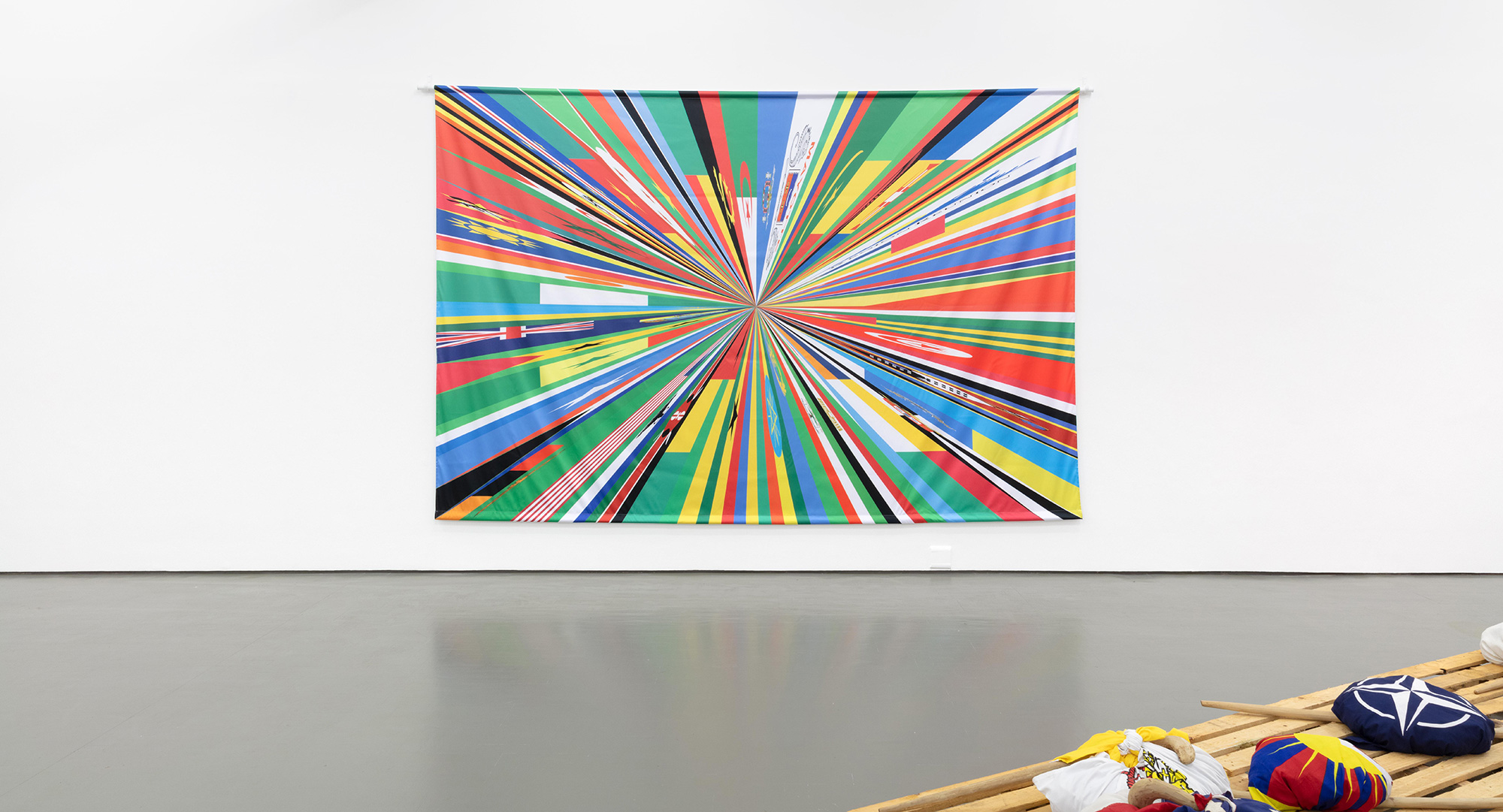Cape Town
29 April - 26 June 2021Meschac Gaba
Citoyen du Monde

Meschac Gaba, Citoyen du Monde, installation view
STEVENSON is pleased to present Citoyen du Monde by Meschac Gaba. This exhibition is the second of twin survey shows focusing on the central tenets of the artist’s practice.
Bringing together installation, sculpture and two-dimensional works dating between 2008 and 2018, Citoyen du Monde provides an overview of Gaba’s visual theses on nationalism, citizenship and the human toll of statecraft. The works exemplify how Gaba has identified spaces of belonging in both the Global North and South while examining the structures that construct this division. Raised in Cotonou, studying at the Rijksakademie, living in Rotterdam and retiring in Cotonou, Gaba has attributed his nomadism and experiences of migration as key to his own understanding of his Africanness. Julia Grosse states:
Since the late nineties, Meschac Gaba has investigated constructs of cultural identity. Inspired by his own reality between the Netherlands and his native country Benin in West Africa, his work playfully explores various relationships – between Africa and the West, the local and the global, art and everyday life. He translates themes such as globalization, capitalism, ecology, migration, religion and power into a visual language that is jolting without being shocking, that brings people together without cloaking them in social romanticism.
Translating as ‘Citizen of the world’, the phrase used as the title of this exhibition was first seen in Gaba’s oeuvre as the title of his 2012 ‘banner’, expressing an ideal of unity through the construction of a global flag. This radiant amalgam of the world’s national symbols, taken further in the direct allegory of his large-scale Globalloon (2013), echoes the artist’s vision for solidarity. In Gaba’s words:
The optical spectacle created by elongating each individual flag into a narrow triangle, converging on a central point, inspired me to create a world flag that is a composite of all countries’ flags and again is symbolic of a togetherness that can resolve the difficulties and crises that proliferate across our world. The singularity of each flag is lost in the rhythm of the composition, as is the case with countries in the age of globalisation where the national is absorbed into the international.
Like the Globalloon, African Unity (2018) is underpinned by a principle that centres idealism in an attempt to ‘infuse a playfulness into our perceptions of the world – in turn, making the world a better place for us all’. As Phyllis Clark Taoua and Taylor Kathryn Miller have observed, ‘Gaba plays with the imagery of nationhood and his irreverent treatment of where political communities begin and end unsettles the once sacred narrative of national liberation.’
The economic and geopolitical intersections that inform how nationhood is constructed in an increasingly globalised marketplace are articulated in Project Voyage (2012), the Diplomatique series (2008-13) and Zimbabwe Survival (2016). The latter works feature devalued and decommissioned banknotes as part of their structure, examining the nation as commodified and commodifying force. Of the first, Gaba has stated:
I wrapped flags into bundles, tied each bundle to a wooden cane, and laid these out on the wooden pallets that I often use in installations. The flags, all made by women dressmakers from Cotonou, are from countries and confederations that have worldwide influence: the European Union, United States, African Union, Vatican, North Atlantic Treaty Organization (Nato), China, United Kingdom, United Nations, Arabic League, Israel, Brazil and Tibet. The wooden canes can be seen as pilgrims’ sticks or as the defensive weapons of nomadic pastors which metaphorically signify the defensive object of the contemporary traveller: the passport.
Memorial for a Drowned Refugee (2016) and Détresse (2017) provide personalised and emotive accounts of movement within and between states. The latter uses flickering car lights to gesture at an emergency and, shaping them into a rosary, simultaneously call for deliverance. On Gaba’s memorial, which counterbalances pathos and urgency, Massimiliano Gioni and Micola Brambilla have written:
[The work] reenacts traditional funerary monuments from a contemporary standpoint. Made from a simple pile of blankets and a few lanterns, the installation symbolizes bereavement according to the funeral ritual that families in Benin perform when a loved one drowns at sea. The lamps provide a guiding light for the deceased’s lost soul, while the blankets keep her spirit warm. The memorial commemorates the seven thousand plus refugees who lost their lives crossing the Mediterranean. It also honours those who survived the crossing, as they too must mourn those they lost.
The exhibition opens on Thursday 29 April 2021 at our Cape Town gallery.

